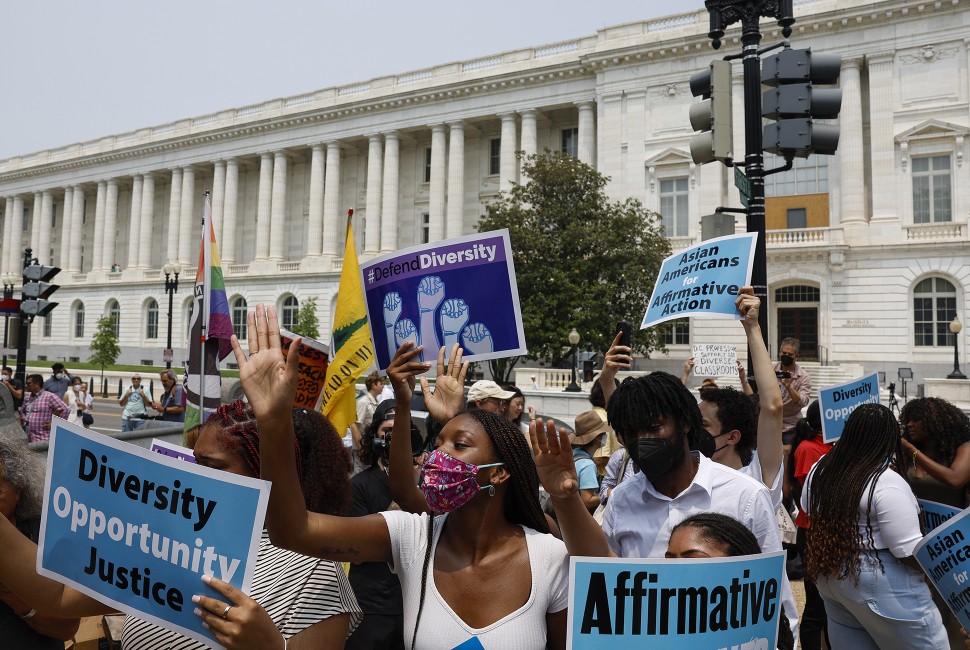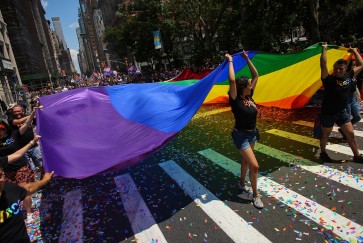The U.S. Supreme Court on Thursday, June 29, ruled that admissions programs at Harvard University and the University of North Carolina violate the Constitution’s guarantee of equal protection.
The decision, a 6-3 vote, is expected to have far-reaching effects on colleges and universities throughout the country as they look to build diverse incoming classes each year.
Shortly after news broke, Northwestern faculty from a range of disciplines took part in a virtual news conference to address how the ruling will affect Americans and businesses from a cultural and legal standpoint. To help make sense of it all, Northwestern Now summarizes some of their comments.
Was this a good ruling?
“That’s a very difficult question to answer,” said Ronald J. Allen, John Henry Wigmore Professor of Law at Northwestern Pritzker School of Law. “Constitutional law is not like chemistry where you can take a case and dip it in a bucket and if it comes out blue, it's correct, if it comes out red, it’s incorrect.
“It involves all kinds of considerations and multiple perspectives,” Allen said. “Normally when you think about constitutional law, the things you look to are text first and structure of the Constitution, then the history behind it, then precedent and then finally policy. Frankly, four out of those five all cut in favor of this decision being correct.
“The proponents of affirmative action in universities are facing what’s called strict scrutiny, which means you have to come up with a really good reason for doing what you’re doing. The universities have come up with unverifiable reasons. Things like training future leaders, acquiring new knowledge, preparing engaged and productive citizens, which you can't measure. If you can’t measure, you can’t judge it. And the judges don’t like that.”
What is the significance of the decision?
“This decision marks the end of an era,” said Anthony Chen, professor of sociology in the Weinberg College of Arts and Sciences and affiliated faculty member at the Institute for Policy Research.
“Affirmative action and college and university admissions do raise questions for people these days, but it’s unquestionably a legacy of that storied moment in our history when civil rights protesters were braving police dogs and water cannons in the streets of Birmingham and when the inspired oratory of MLK was ringing forth from the steps of the Lincoln Memorial,” Chen said. “Since then, SCOTUS has put tighter and tighter bounds on affirmative action, but this decision sweeps away affirmative action as it's practiced today by hundreds if not thousands of schools in the U.S.
“I’ll just point you to section 6 of the opinion. The first paragraph is basically a laundry list of problems that the majority found with the Harvard and North Carolina programs. But it also looks a little bit like a list of things that schools could try to do right to clear strict scrutiny. So, I wonder whether some guidance along those lines is going to be coming from the executive branch.”
Was there a better argument for upholding affirmative action than was made here?
“I’ve long thought that a much better argument for affirmative action, at least in public schools, is that the state has an obligation to remedy the effects of its own racially disparate behavior that led to people applying to colleges from unequal positions,” said Paul Gowder, professor of law and associate dean of research and intellectual life at Northwestern Law.
“One thing we know: although Clarence Thomas and the concurrence disagrees with this in this opinion, is that the framers of the Fourteenth Amendment intended for it to be used to rectify the economic exclusion of Black people,” he said. “This goal has not yet been met. And so once again, this is a reason to do an affirmative action that does not go through this diversity rationale, and there are still opportunities for people to make the argument that the courts ought to be accepting these reasons.”
How does race factor into admissions now?
“What the court has given us today is really a radical break from precedent and also a break from the reality of how college admissions works,” said Alvin Tillery, professor of political science in the Weinberg College and director of the Center for the Study of Diversity and Democracy.
“You can’t use race for Black and Latino and Indigenous and poor Asian kids, as a nudge factor, right? But guess what? Race is used for white people in college admissions,” he said.
“We also know from recent studies coming out of Harvard and Princeton that looking at the admission system, some of which again made it into the amicus briefs, that something like 30% to 40% of the spaces at these elite schools are encumbered before admissions even start. They're encumbered because of the use of legacy admissions and athletics. And what we know in those two categories — because of the nature of our society in the middle of the 20th century when affirmative action was put in place — those two categories are filled with affluent white people.
“And so, what are the knock-on effects of saying that you cannot use race at all in admissions? Does that mean that we can no longer encumber spaces in admissions before we open them up to the rest of the applicant pool? Does it mean that we can no longer use legacy preferences? If Princeton doesn't desegregate until 1977 when Justice Sotomayor gets there, having a legacy entitlement at Princeton is essentially a white entitlement. So, can schools do that now?”


